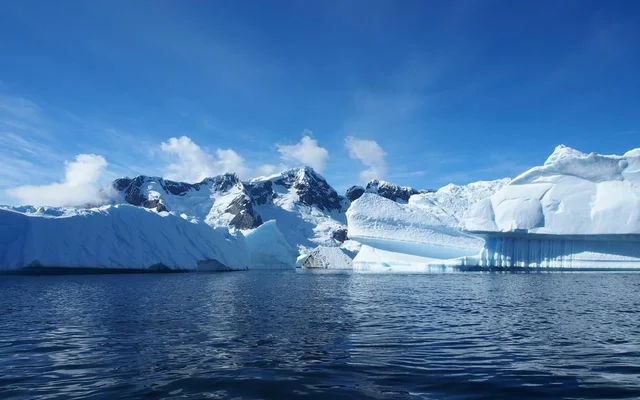1:06 AM The cost of ice Antarctica has reached 250 billion tons per year | |
Over the past 4 decades, the costs of ice in Antarctica have accelerated at a staggering rate. From 1979 to 1990, the frozen continent dumped ice at a rate of 40 billion tons per year. A fresh test, however, proved that since 2009 this figure has increased to 252 billion tons per year—6 one higher than the previous figure. The results, published in the Proceedings of The state Academy of Sciences, suggest a “longest” assessment of the ice mass of Antarctica. As reported by Matthew Taub for Atlas Obscura, a group of researchers from the California Institute in Irvine and the Netherlands Utrecht Institute used satellite and weightless images from 1979 to study 18 Antarctic habitats, elements of 176 basins and a number of Islands around. Comprehensive educational program depicts a brutal portrait of the coming of Antarctica. The 40-year-old leap in ice loss is quite exciting, but like that scientists, the figure will only grow in the future, sending melted ice to the universal ocean and causing an increase in the value of the sea with potentially devastating results. Writing for the Washington Post, Chris Mooney and Brady Dennis explain that the escalation of the seas promises to threaten the island communities, habitats of unbridled nature and including drinking water supply. The degree of The large ocean has risen 7 - 8 inches since 1990, but again, scientists are talking, in fact, that this number will only increase in the coming decades. In fact, the 2013 report foreshadowed a jump of almost 3 feet by 2100, unless measures were taken to significantly limit carbon emissions. Common challenges in the ice of Antarctica contains the potential of increasing the value of sea 187,66 ft. In the usual criteria, the loss of ice in Antarctica is compensated by the accumulation of snow, which actually guarantees the conditional strength of the large ocean. However, thanks to the increase in temperature associated with mass warming, the mainland is checking what Brandon Miller from CNN calls “an imbalance between the melting of ice and the replenishment of snow.” The final test still explains the important loss of ice in East Antarctica, which was previously relatively harmless from water warming, due to the fact that its basis is located in the leading above sea level, reports Alex Fox for the journal Science. All in all, Maddie stone reports to Earther, the team noticed that East Antarctica actually brought 4.4 mm to the mass degree of the Earth's sea over the past 40 years, while West Antarctica brought 6.9 mm. Eastern cold shield, it is likely, for example does not melt quickly as its Western neighbor, but Mooney and Dennis of the Washington Post show the fact that East Antarctica holds a huge share of the ice continent, in fact what draws within 90% of the joint likely increase the value of a sea of Antarctica. The loss of Antarctic ice is not considered to be something fresh, but as principal Creator Eric Rignot of the California Institute in Irvine talks, East Antarctica's mite in this appearance deserves further investigation. ” The traditional gaze from a set of 10 years back, actually that nothing special happens in East Antarctica, " Rignot talks. “This is somewhat similar to wishful thinking.” Continuing this line of the Duma in a press release, he concludes: "this area is probably more sensitive to climate change than usually expected, and this is fundamentally aristocracy, due to the fact that it has even more ice than West Antarctica and the Antarctic Peninsula combined." | |
|
| |
| Total comments: 1 | |
|
| |

